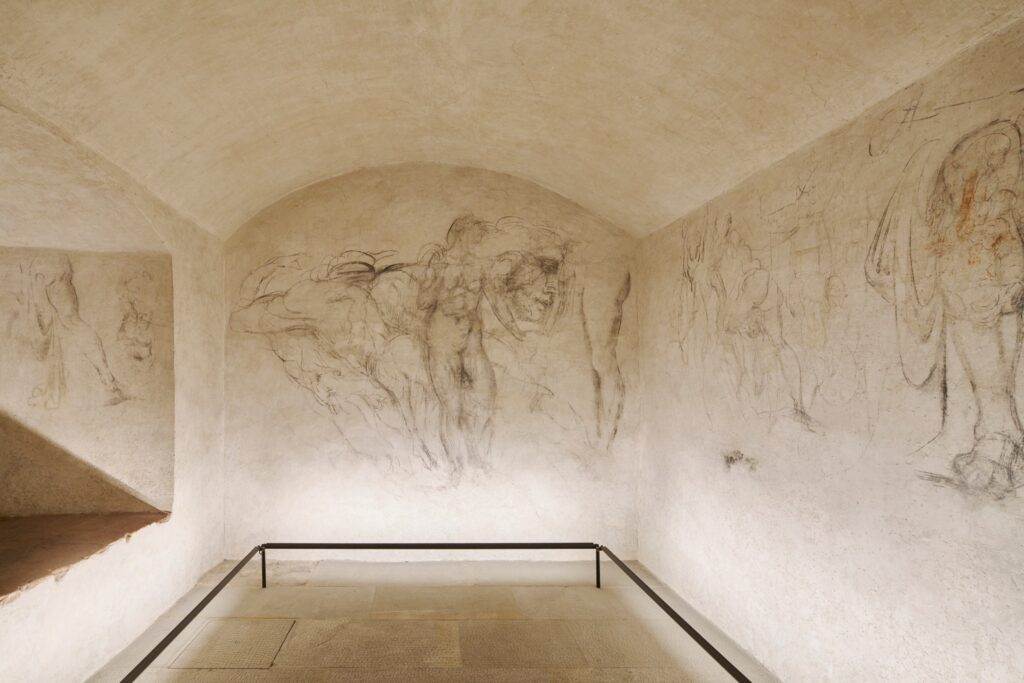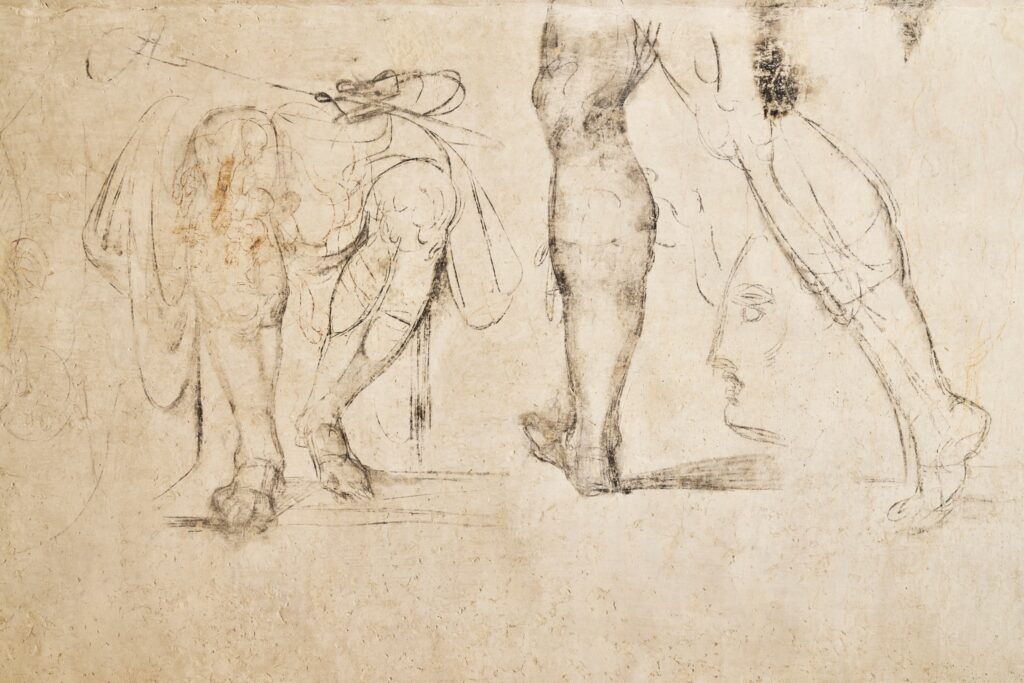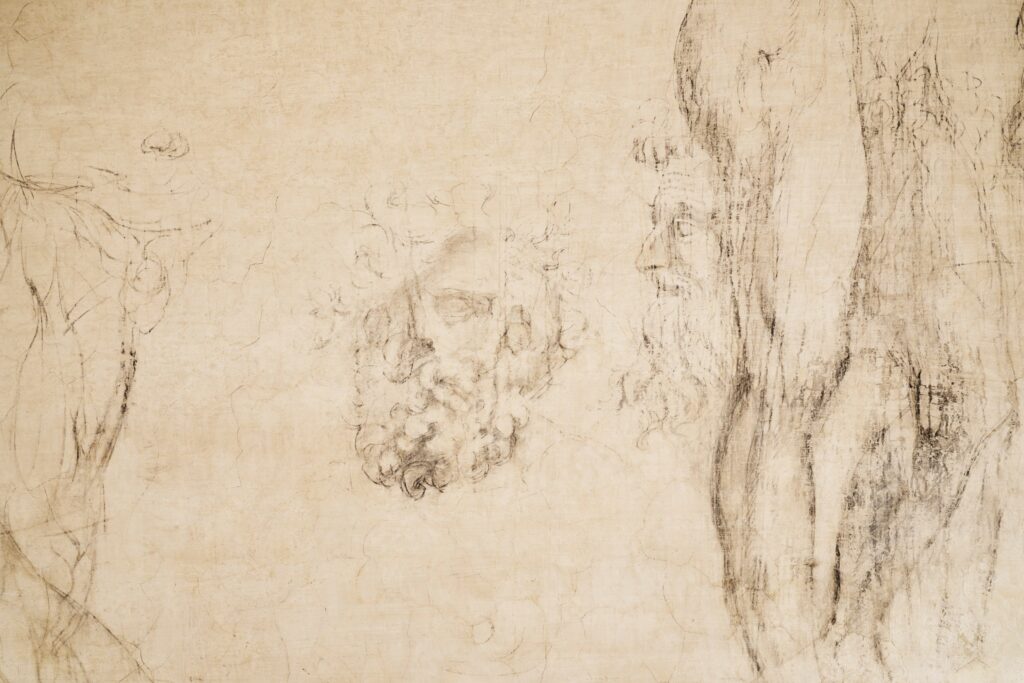Turner at 250: The Best Anniversary Exhibitions
The year 2025 marks the 250th anniversary of the birth of Joseph Mallord William Turner, arguably Britain’s greatest landscape painter.
Catriona Miller 13 February 2025
Visitors of the Basilica di San Lorenzo in Florence, Italy have a unique chance to visit a secret room under the Medici Chapel until March 30, 2024, open for the very first time. Michelangelo is said to have taken refuge in the tiny space for two months while evading a death sentence ordered by Pope Clement VII. Now, nearly 500 years later, a collection of long-hidden charcoal drawings offers a rare look into the Renaissance genius’ artistic process.
In 1520, Michelangelo was hard at work on a mausoleum for his patrons, the Medici, one of the most powerful families in Europe. But by 1527, he began to grow weary of their rule and eventually joined a revolt that drove the family out of Florence. Michelangelo even served as supervisor of the city’s fortifications for the republican government that temporarily replaced them.

Michelangelo’s Secret Room, Museum of the Medici Chapels, Florence, Italy. Musei del Bargello.
After the family’s return to power in 1530, the current pope—also a Medici—issued Michelangelo to be put to death. This is when the artist is said to have been forced into hiding. Some thought he hid with a friend; others suspected he sequestered in a church bell tower. Today, nearly 500 years later, it is believed Michelangelo sought refuge in the tiny room below the very chapel he was working on. The artist was eventually pardoned so he could continue working on the Medici family tomb and the Sistine Chapel. But in 1534, he left for Rome and never returned.
This secret room within Florence’s Medici Chapel grants visitors the unique experience of interacting not only with the creative process of the maestro Michelangelo but also with the becoming of his myth as a divine artist.
The small room in the Basilica di San Lorenzo was used to store coal until 1955 when it was sealed shut and forgotten. Twenty years later, in 1975, museum officials were in search of a new exit from the Medici Chapel due to an influx of visitors. They discovered a trapdoor obstructed by wardrobes and other furniture that led to a room measuring 33 feet by 10.
Experts spent weeks carefully removing plaster from the walls, under the guidance of the then-director of the Museum of the Medici Chapels, Paolo Dal Pogetto. Beneath two layers of thick coating lay numerous delicate charcoal drawings, which scholars now believe were made by the hand of Michelangelo. According to Dal Poggetto, Michelangelo used the room to sketch out studies for some of his most renowned projects, including the legs of Giuliano de’ Medici from the New Sacristy and even the head of Laocoön. His only source of light was from a single hatched window.

Michelangelo’s Secret Room, Museum of the Medici Chapels, Florence, Italy. Musei del Bargello.
This tiny room is a truly unique find with its exceptional evocative potential. Its walls seem to barely contain numerous sketches of figures, many of monumental size, traced with marks that demonstrate exceptional design clarity.
“The moment you enter that room, you are simply speechless,” explained Paola D’Agostino, the director of the Bargello Museums, to the New York Times. “Even though I have been in the room so many times, I am still amazed by this mesmerizing set of drawings,” she said.
Due to its compact size, the space is accessible to a maximum of four people at a time by reservation only. Visitors may spend up to 15 minutes inside the room with museum security personnel on-site. In between visits, the room will be kept dark. These precautions have been put in place to help reduce the exposure to LED light, protecting the fragile conditions of the nearly 70 sketches on the walls.

Michelangelo’s Secret Room, Museum of the Medici Chapels, Florence, Italy. Musei del Bargello.
While the provenance of the drawings is still subject to scholarly debate, they leave us wondering what else might be hiding beneath layers of plaster around the city, just waiting to be discovered.
Tickets cost €20 (US$21.40) per person, in addition to an entrance fee of €10 (US$10.71) and €3 (US$3.21) reservation fee. The vault will remain open to the public until March 30, 2024. For more information, visit the Musei del Bargello website.
DailyArt Magazine needs your support. Every contribution, however big or small, is very valuable for our future. Thanks to it, we will be able to sustain and grow the Magazine. Thank you for your help!